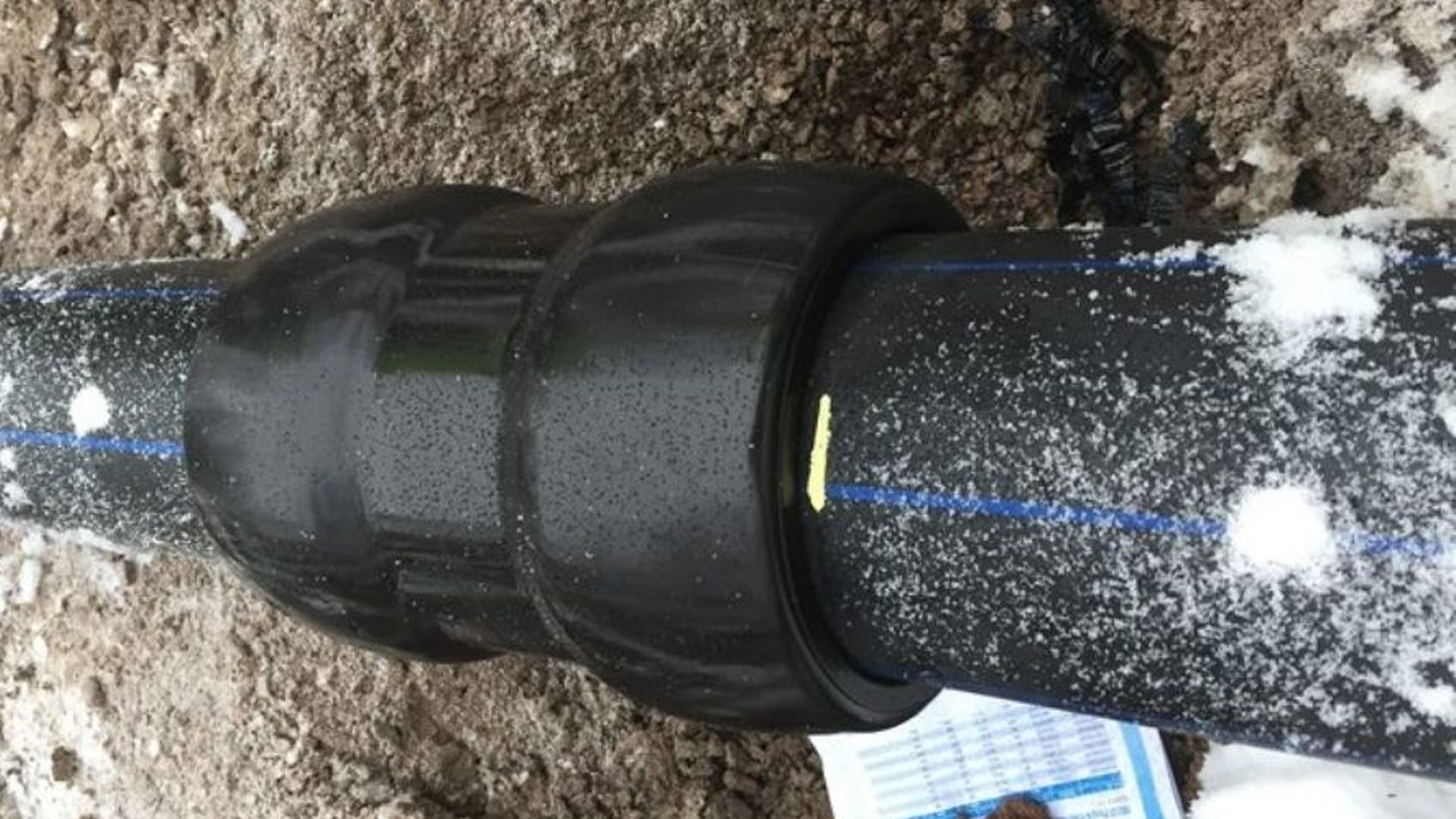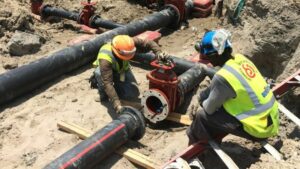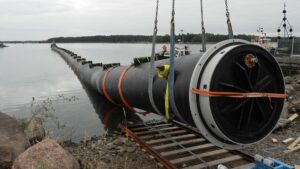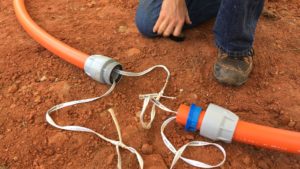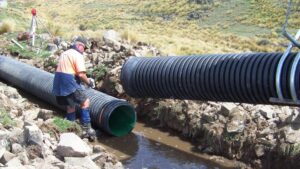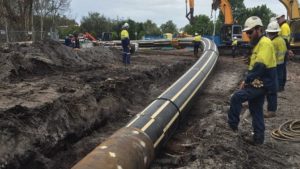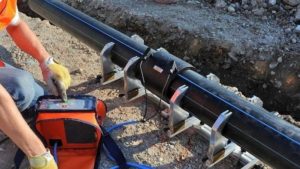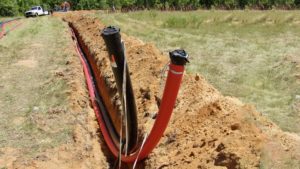HDPE is the most commonly used flexible conduit material due to its physical property advantages such as:
Ductility & Toughness
- HDPE conduit resists embrittlement over time during its service life.
- Permanent flexibility – HDPE conduit bends and flexes without breakage over a wide range of temperatures, even with ground heaving or shifting.
- Resistance to rough handling and gouging – HDPE can resistant significant surface damage making it ideal for plowing and HDD installation methods.
Temperature Versatility
- Low temperature impact resistance – HDPE withstands low-temperature impact. This is illustrated by impact testing on PE conduit conditioned at -4 °F (- 20 °C).
- HDPE conduit can be installed in ambient temperature ranging between -30 °F to 180 °F (-34 °C to 82 °C).
- Power conductors rated at 90 °C (“wet”) and medium voltage cable rated at 105°C (“dry”) are permitted for use with HDPE conduit.
Ease of Installation
- Availability in long continuous lengths – HDPE conduit can be coiled for shipment thus permitting long continuous, unjointed installations runs.
- Identification by colors and striping – HDPE can be colored to assist in uniquely identifying conduits within a bundle and during post-installation excavating.
- Lightweight and ease of handling – HDPE can be handled by hand or light equipment.
- Watertight connections – HDPE conduit can be joined by fusion or mechanical fittings.

